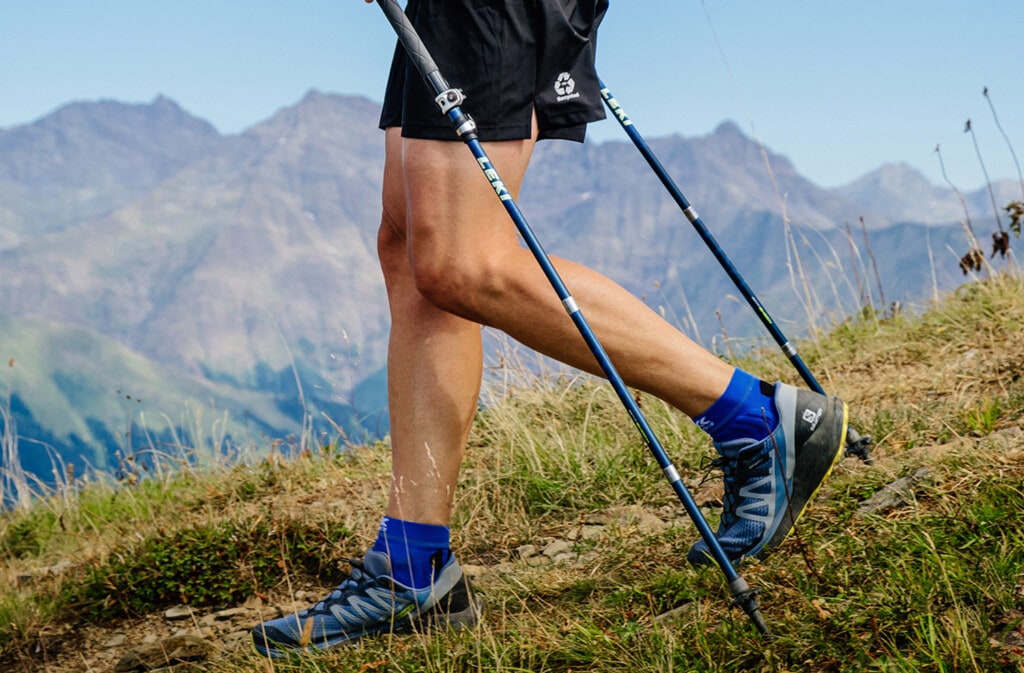Published on: 14/04/2023
In a hurry? Go directly to the top 5.
If you’re a seasoned trail runner or are just starting out off road, you’ll definitely have heard of the Salomon brand. One of the leaders of the trail running shoe market, Salomon has an impressive range of shoes for running, mountain walking, and all sorts of adventure and endurance sports. And the brand’s products often appear at least once in any “best of” trail shoe reviews.
So, what are the best Salomon trail running shoes for your needs, from the most technical trails to runnable miles and everything in between?
Read on to discover our selection for 2023, some key information around the Salomon brand, and the answers to any questions you could have about its shoes.
Our Selection of the 5 Best Salomon Trail Shoes for 2024
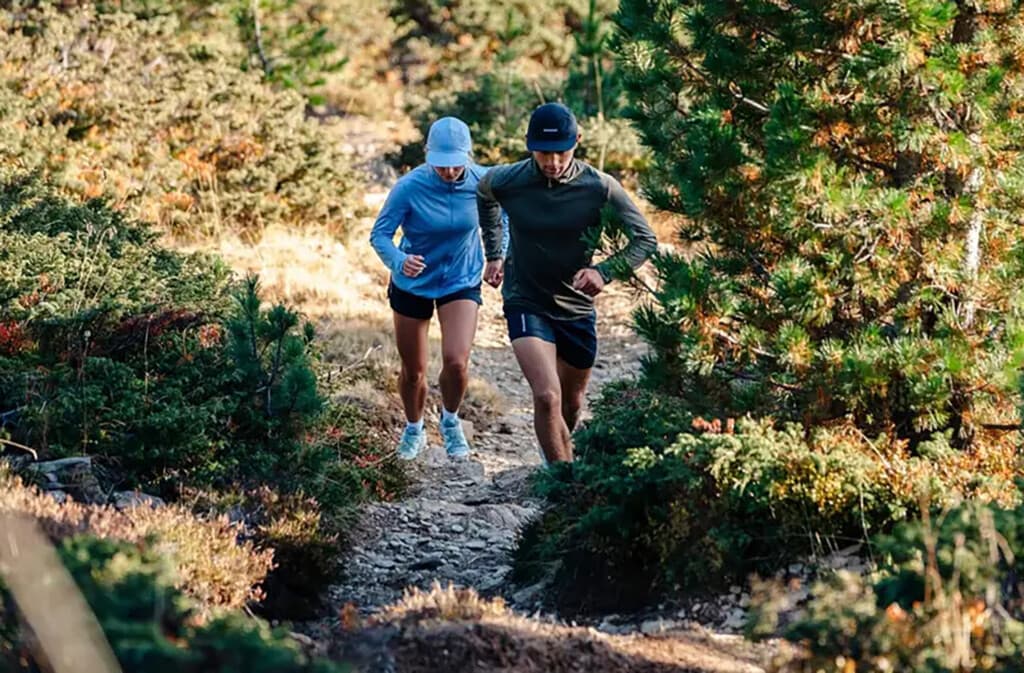
Finding the right trail running shoe for your demands can be tricky. Luckily, Salomon’s 2023 line-up includes a little bit of everything for everyone. Here’s the top of the crop.
Comparison Table
| Shoe | Weight | Heel Stack Height | Drop | Lugs | Best for | Best offer |
|---|---|---|---|---|---|---|
Salomon Speedcross 6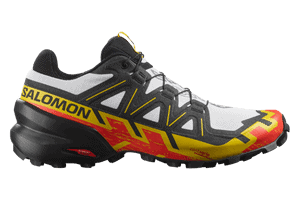 | 288 g/10.1 oz | 32 mm | 10 mm | 5 mm | Muddy Trails | Check prices → |
Salomon S/Lab Pulsar 2 | 178 g/6.3 oz | 24.5 mm | 6 mm | 2.5mm | Speed | Check prices → |
Salomon Ultra Glide 2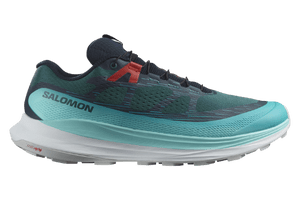 | 288 g/10.1 oz | 32 mm | 6 mm | 3.5 mm | Ultrarunning | Check prices → |
Salomon Sense Ride 5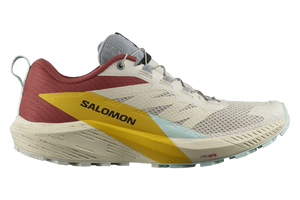 | 286 g/10.1 oz | 29.6 mm | 8.3 mm | 3.5 mm | All-Arounder | Check prices → |
Salomon XA Pro 3D v8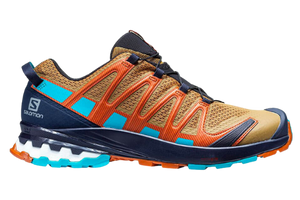 | 340 g/12 oz | 34.2 mm | 11 mm | 3.5 mm | Most Supportive | Check prices → |
1. Salomon Speedcross 6: Most Popular + Best for Muddy Trails
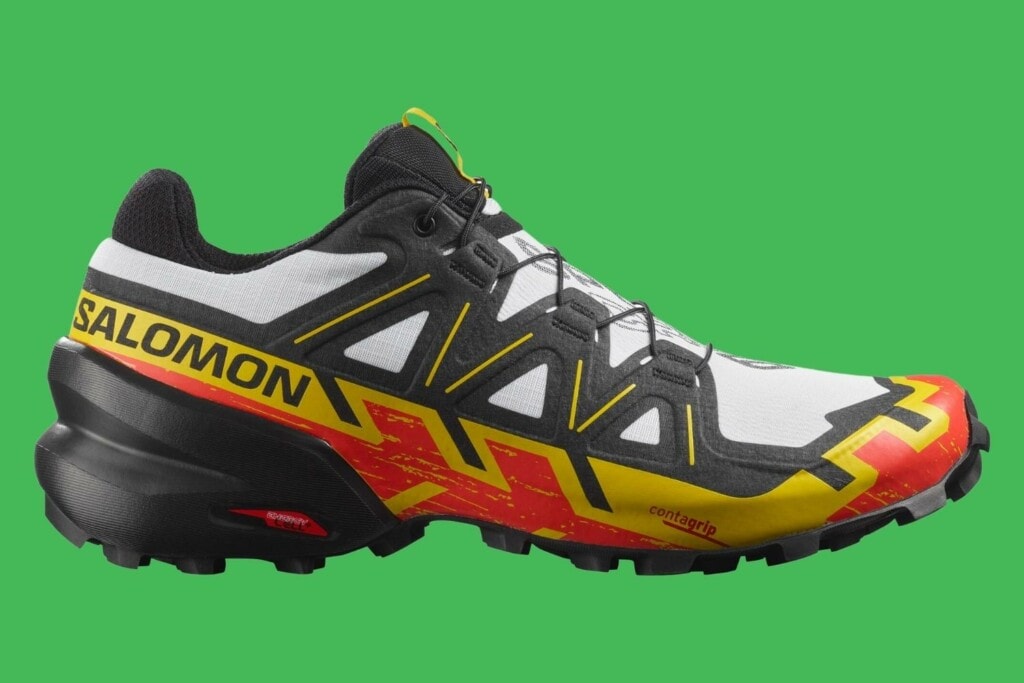
Facts
Stack height: 32 mm heel, 22 mm toes
Drop: 10 mm
Cushioning: Moderate
Recommended use: Daily trainer, muddy races
Weight: 288 g/10.1 oz (men’s size 42), 266 g/9.4 oz (women’s size 40)
Running on muddy, rough terrain like in the United Kingdom or Norway, you’ll need a shoe that can give you excellent grip and stability. The Speedcross range has been the top choice of cross country and fell runners for years, and for good reason too. It’s also by far one of the best known, most popular trail running shoe Salomon makes.
With 5 mm lugs, the Speedcross 6 is great for rugged trails requiring grip, flexibility and responsiveness. The ample ground feel is also welcome, while the brand’s signature Sensifit system ensures that they shoes are firmly attached to narrow feet. For wider feet, there is also a special wide version of the shoe.
Among the various different shoes Salomon has to offer, the latest Speedcross shines by combining excellent traction with tight fit and some energy return from the EnergyCell+ design. This latest iteration is also slightly lighter than the previous version, adding to the overall comfort.
Pros
Cons
2. Salomon S/Lab Pulsar 2: Best for Speed
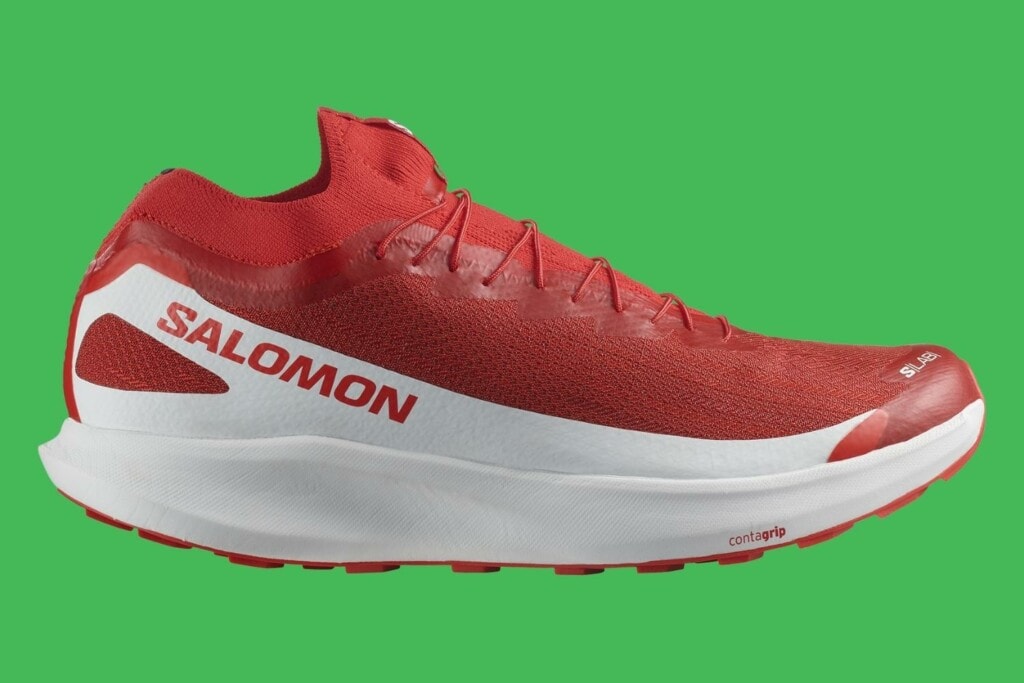
Facts
Stack height: 24.5 mm heel, 18.5 mm toes
Drop: 6 mm
Cushioning: Moderate
Recommended use: Speed training, racing, mostly non technical trails
Weight: 178 g/6.3 oz (unisex)
When the Salomon S/Lab Pulsar was first launched, it was an absolute speed rocket. Designed with and for trail running legend Kilian Jornet to break records, the Pulsar was super lightweight, bouncy and agile. It delivered a fast racing performance on easier trails and presented lots of innovations, from the unisex design to the new Energy Foam.
With the Pulsar 2, Salomon hasn’t actually changed much. The new version is still fast and light, agile as ever, and incredibly fun to run in. Given the decent stack height, it’s remarkable how light the shoes feel when you’re wearing them. The upper is the only one that’s had a bit of an upgrade: Salomon has switched to a new Matryx aramid reinforced mesh which should make the shoe more durable.
Salomon’s S/Lab Pulsar 2 features an EVA Olefin block copolymer foam in the midsole, similar to the Energy Surge foam from the first version. It’s still full of bounce and comfortable enough for speedy road running as well as all terrain racing. However, the outsole isn’t built for tricky terrain. This is a shoe for smooth rolling trails and hard packed dirt tracks, where you want to go fast and break some records (of you own, if not course records!).
Pros
Cons
3. Salomon Ultra Glide 2: Best for Ultras
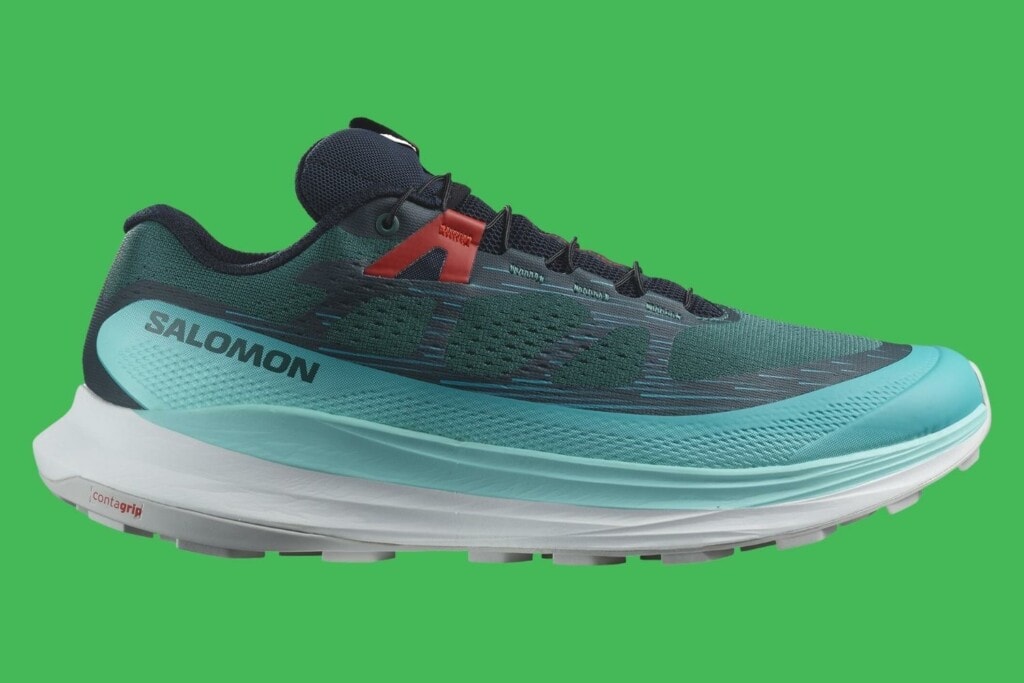
Facts
Stack height: 32 mm heel, 26 mm toes
Drop: 6 mm
Cushioning: Maximal
Recommended use: Long runs, ultra racing
Weight: 288 g/10.1 oz (men’s size 42), 265 g/9.3 oz (women’s size 40)
The first Salomon Ultra Glide was a great foray into “truly” ultra distance running for the brand. Unlike the S/Lab Ultra range, which didn’t quite have enough cushioning, the Glide was comfortable and lightweight, while staying responsive enough to make it a perfect shoe for ultra racing. In the latest version, Salomon has upgraded the midsole and the upper. There’s a reverse camber and profeel film that make the ride smoother than in the previous shoe. Inspired by the brand’s ski know-how, the design also offers a bit of extra stability, according to reviewers.
The Ultra Glide 2 features an internal EndoFit sleeve, hugging the foot for precise fit, in addition to the SensiFit design. You’ll get a secure hold for hours on the trails, further enhanced by the brand’s signature lacing system that tightens the shoe all around the foot.
Overall, the second Ultra Glide will provide ample traction where needed with the Contagrip rubber outsole, while also ensuring you have a comfortable ride for running long distances of 50km and above. This cushioned trail shoe gives exceptional comfort to runners of all abilities, but wouldn’t be a top pick for technical runs on mud or in the wet.
Pros
Cons
4. Salomon Sense Ride 5: The All-Arounder
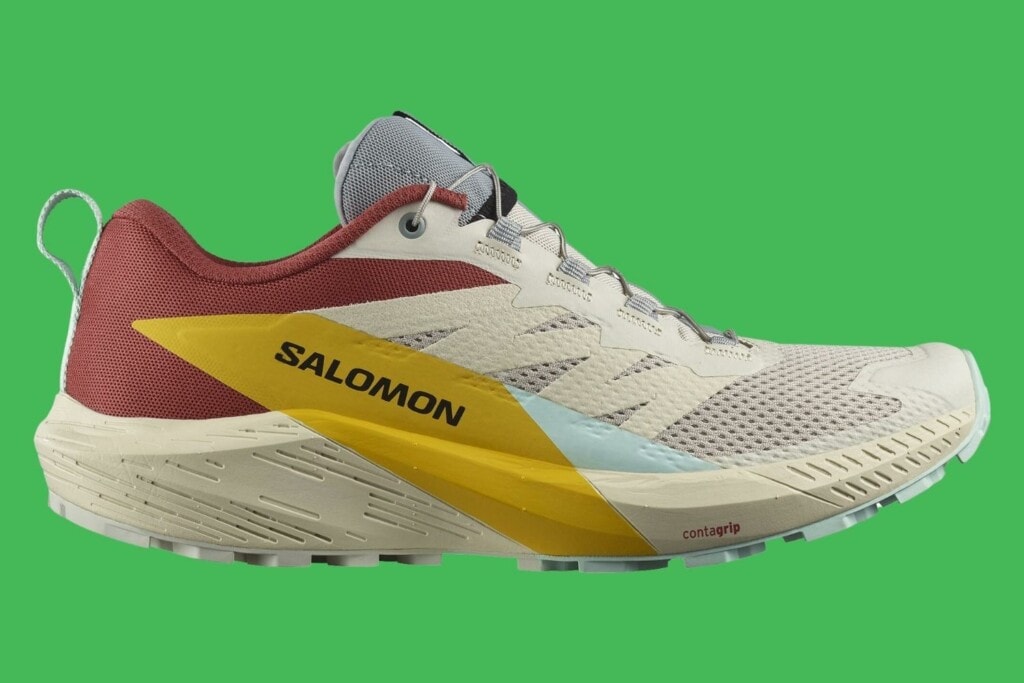
Facts
Stack height: 29.6 mm heel, 21.3 mm toes
Drop: 8.3 mm
Cushioning: Moderate
Recommended use: Everyday running, road to trail, mixed terrain
Weight: 286 g/10.1 oz (men’s size 42), 247 g/8.7 oz (women’s size 40)
Billed as the brand’s road to trail shoe, the Sense Ride appeals to long time runners and beginners alike. It has an outsole clad in sticky rubber and 3.5 mm lugs that are good enough for trail outings, but not uncomfortable if want to go on the road. Coupled with the signature snug fit, brilliant Quicklace lacing system, and a nicely padded upper that is still breathable enough, the Salomon Sense Ride 5 is the almost perfect all-arounder.
There’s no fancy rock plate or particularly high-performance design in these shoes. They have a slight rocker shape (nowhere near the Ultra Glide 2) and a high and padded heel collar that hugs your ankles to protect them from trail debris (especially when laces are tightened well). The toe box is also good for protection on rocky terrain.
The only drawback most trail runners have noticed with the Sense Ride 5 is the slight stiffness overall. This adds to protection and stability on difficult terrain, however. And, without gaining weight, this version also has an increased cushioning – 4 mm extra to be precise. They’re still not a high mileage shoe, but the added comfort makes them a better choice for technical terrain than previous iterations.
Pros
Cons
5. Salomon XA Pro 3D v8: Most Supportive
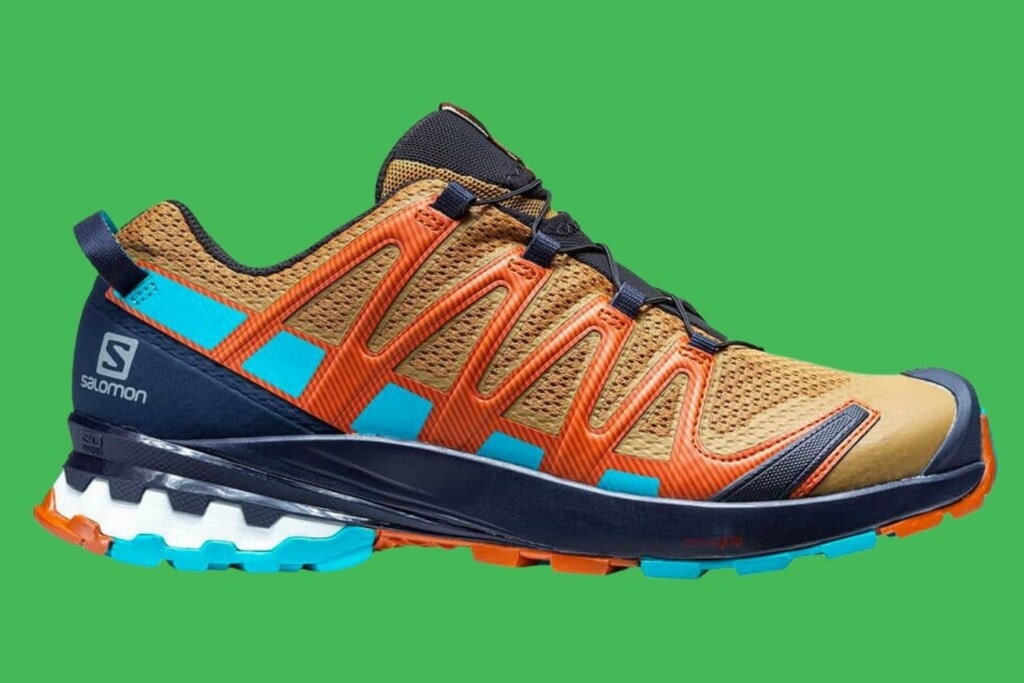
Facts
Stack height: 34.2 mm heel, 23.2 mm toes
Drop: 11 mm
Cushioning: Moderate to low
Recommended use: Everyday running, technical terrain, uneven terrain
Weight: 340 g/12 oz (men’s size 42), 300 g/10.6 oz (women’s size 40)
If you’re looking for stability from your trail running shoes, the XA Pro 3D v8 are the best choice. Recommended for technical, difficult trails, these Salomon trail shoes excel in most conditions. The latest iteration is lighter and slightly softer than before. However, the basics are still there: a tight fitting lacing system that provides a secure grip on your foot, supported by 3.5 mm lugs and Contagrip premium wet compound to help on rainy days.
The XA Pro 3D v8 also features an unusual 11 mm drop. Likely to make it more accessible to beginners, this contributes to the shoe’s stability. The Sensifit upper works really well with the laces to then provide a feeling of “trail glove” on your feet, too.
For added protection from the elements, you can also find the XA Pro 3D v8 in a Gore-Tex version. Going waterproof may affect the breathability of the shoe, however.
Pros
Cons
Salomon: An Iconic Trail Running Brand
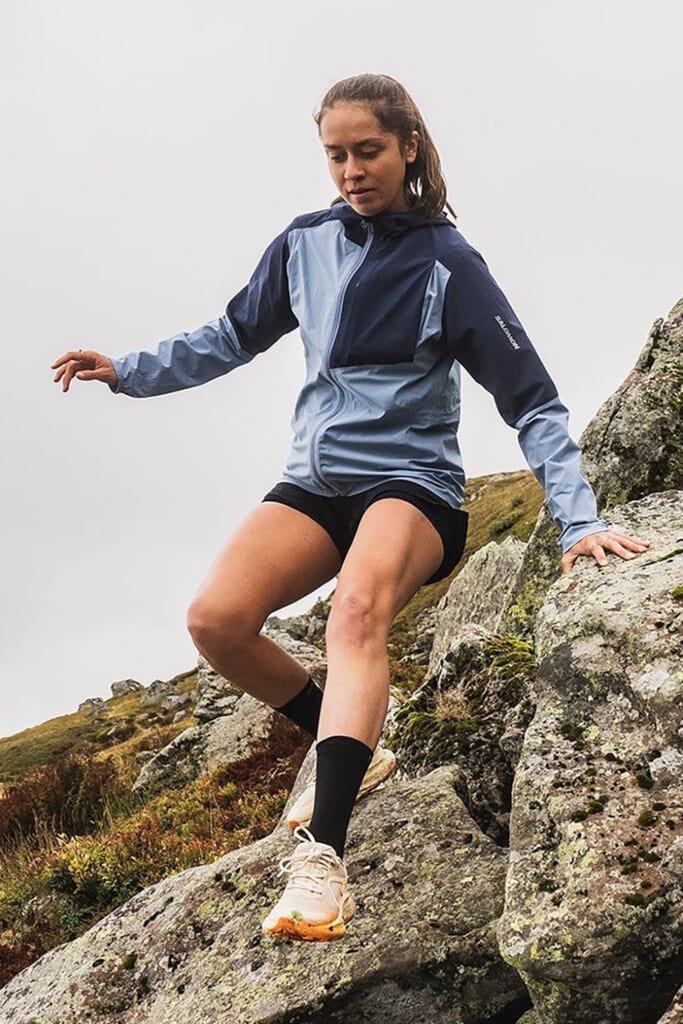
Founded in 1947 in Annecy in the French Alps, Salomon first grew into an iconic name in skiing. After becoming the go-to brand for ski bindings, the company developed its range up to around 2000, when it decided to diversify into trail running and hiking.
Just like with the skiing range, Salomon’s trail shoe range is impressive. It features shoes and boots for all terrains and conditions. It also caters to anything from fast racing to slower walking. And, to top it off, there’s probably a variety of options for each model, to include at least a wide fit and GTX or waterproof alternative to the main version.
It’s worth noting that, since 2005, Salomon is part of Amer Sports, a Finnish group, which was bought by Chinese company Anta Sports in 2019.
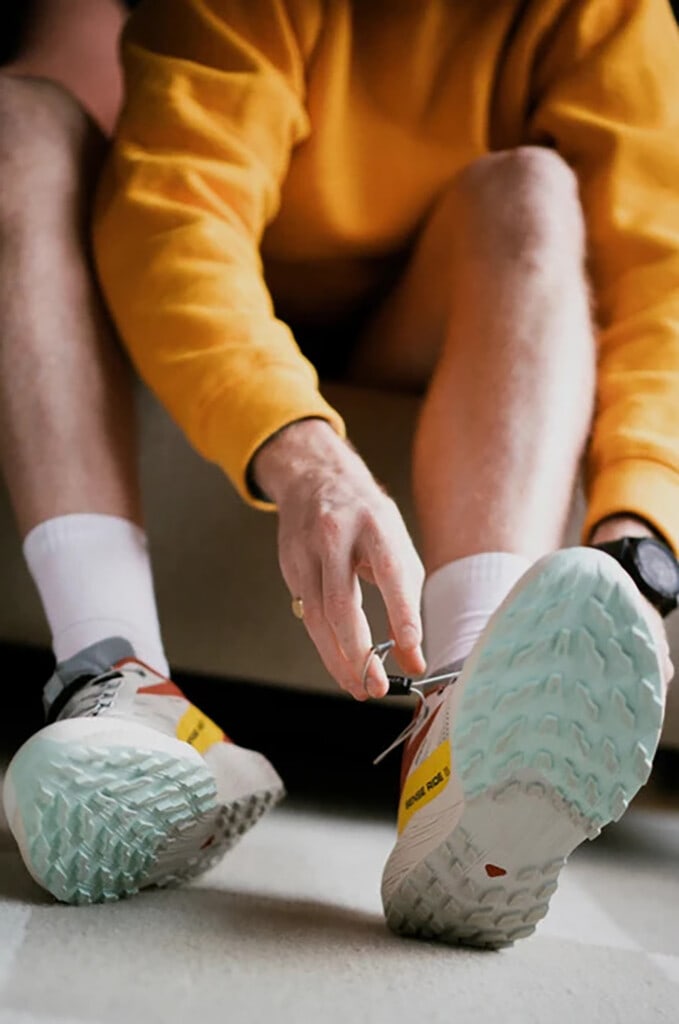
In terms of their ethical credentials, the brand invests in education and raising awareness of the environmental impact of the sport as a whole. They commit 1% of their annual revenue towards this goal. The Salomon Foundation, moreover, gives back to the mountain community by supporting athletes and other members in case of injury.
Salomon is a great innovator when it comes to sustainability as well. The company launched a unique pair of road shoes, the Index.O1, that could be fully recycled, and that’s now been followed by the Index.O2. They also try to educate their consumer base and publicize their various initiatives here (1).
Key Technologies
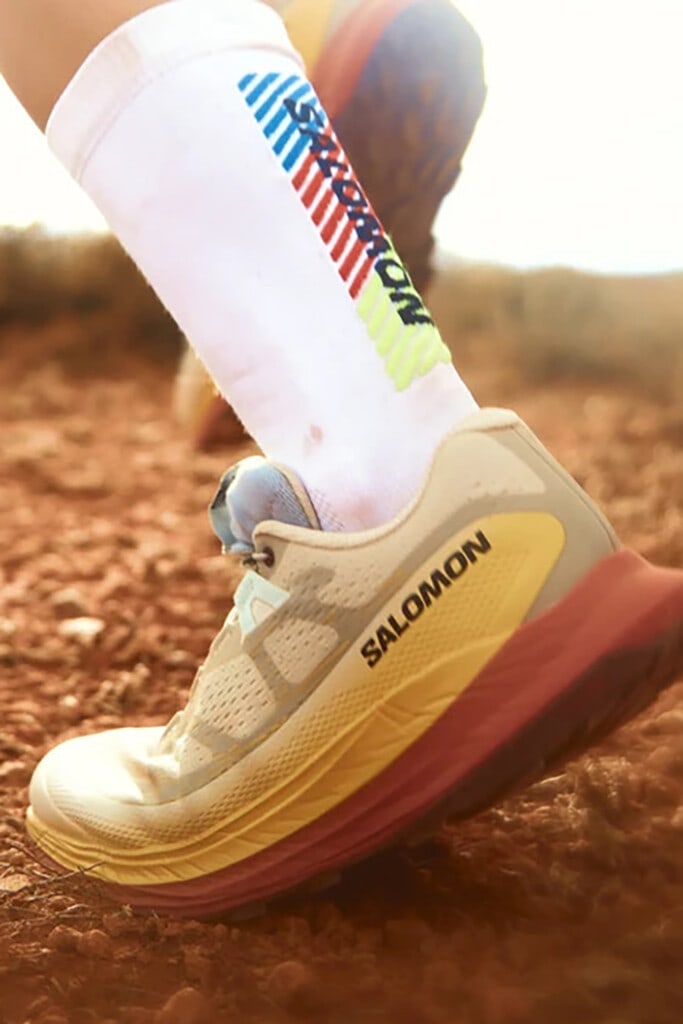
Salomon’s trail running popularity developed thanks to the high quality, high performance technology it’s brought to the sport. Using the skiing know-how and the owners’ understanding of mountainous conditions, Salomon uses innovative technologies that take its shoes to the top of podiums in races.
These include:
- Quicklace lacing system: A super fast, simple and snug fitting lace design that allows runners to tighten the upper to fit really well against the foot, as well as to stow away the laces during running so they never become undone;
- Contagrip outsole: An in-house produced rubber formula that grips well on muddy ground and keeps the outsole flexible at the same time. It doesn’t perform well on wet rock, however;
- Firm design for energy return: Salomon combines a dual-layer midsole called Optivibe (mix of EVA and Olefin foams) with an EVA-based foam (EnergyCell+) and a TPU insert (Energy Save) to absorb shocks and provide bounciness. The overall feel of the shoe is cushioned, yet firm. The latest foam Salomon uses in their shoes is Energy Surge, a mix of EVA and Olefin for high energy return at lower weight.
Top Salomon Athletes
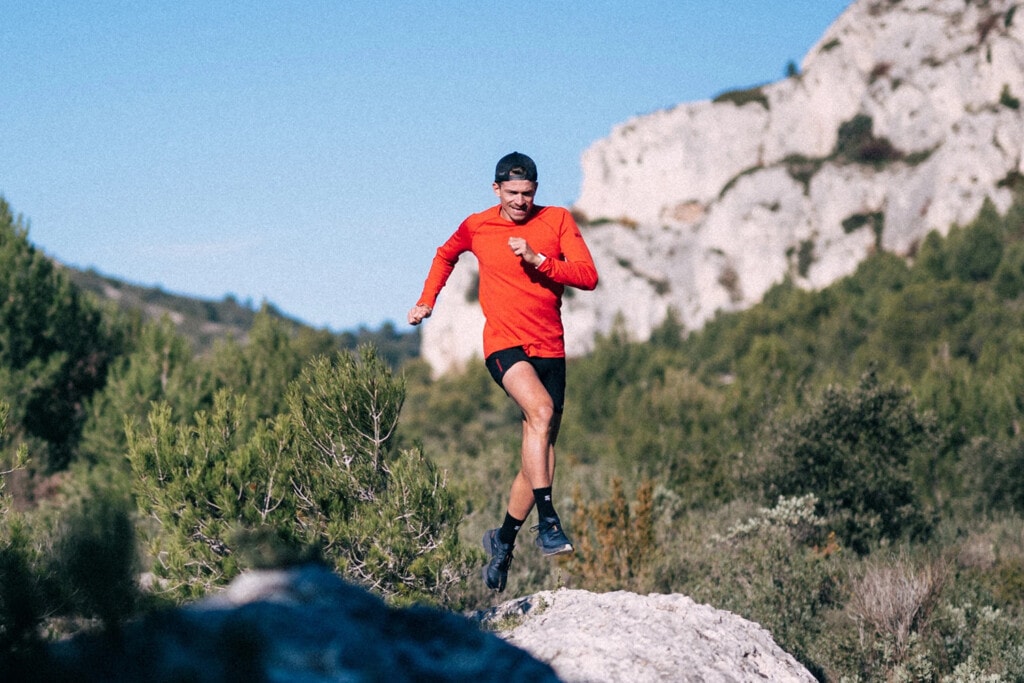
The reason most trail runners are familiar with Salomon is that the brand is also extremely active in sponsorship. Not only does Salomon routinely sponsor trail races (over the years, they’ve been involved with Tromsø Skyrace (2), the Glen Coe Skyline (3) and more), it also has a very respectable roster of professional runners.
The flagship name for many years was Kilian Jornet (4), the Catalan trail running “king” who has set multiple course records from a young age and is known to pretty much win any race he enters (and any distance, from fast and technical trails to 100-milers). Kilian’s wife and extremely talented Swedish trail runner Emelie Forsberg (5) was also a long-time Salomon athlete. Since their departure from the brand in 2021, it’s fair to say that French ultrarunner François D’Haene (6) is Salomon’s biggest name. He is the 4-time winner of both UTMB Mont Blanc (7) and the Diagonale des Fous (8), two of the most prestigious ultra races in the world. His female counterpart is American Courtney Dauwalter (9), a force to be reckoned with: she’s not only won UTMB, the Hardrock Hundred Endurance Run (10), Western States (11) and the Diagonale des Fous, she’s also beaten everyone (men included) to win grueling races like the Moab 240 (12) outright.
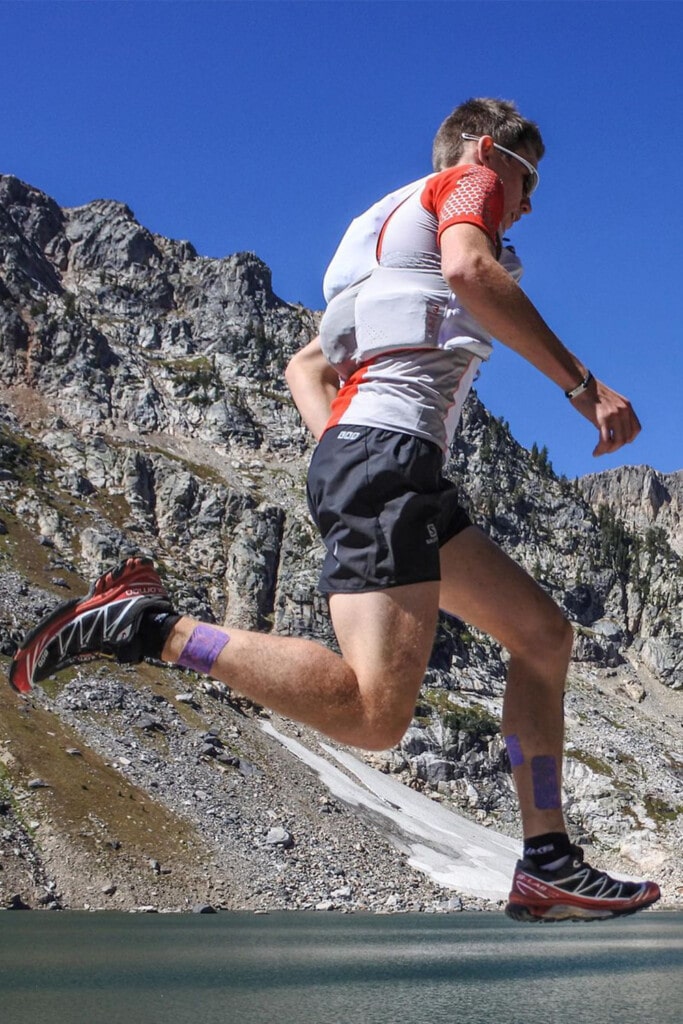
But Salomon doesn’t just align itself with great ultrarunners (the list goes on there: Mathieu Blanchard (13), second man after Kilian Jornet to go under 20 hours at UTMB, Marianne Hogan (14), Camille Bruyas (15), Rickey Gates (16)…). They also sponsor highly technical, fast runners like Swiss record-breaker Maude Mathys (17) and the Italian alpine specialist Davide Magnini (18).
Frequently Asked Questions (FAQs)
Are Salomon trail running shoes good for hiking?
You can certainly wear Salomon shoes on walks or hikes. The best option among the brand’s trail running shoes is the XA Pro 3D v8, which is stiffer and more stable for challenging terrain. However, some of the other cushioned models can also be comfortable for long walking distances.
Salomon also has a range of hike-specific shoes and boots. Find out our favorites here.
Is Salomon a good running shoe brand?
Thanks to continued innovation and dedication to following the sport of trail running, Salomon is one of the best running shoe brands out there. It is definitely a brand better suited to trails than the road, however they have made a lot of recent progress in designing road shoes as well.
Is Salomon good for trail running?
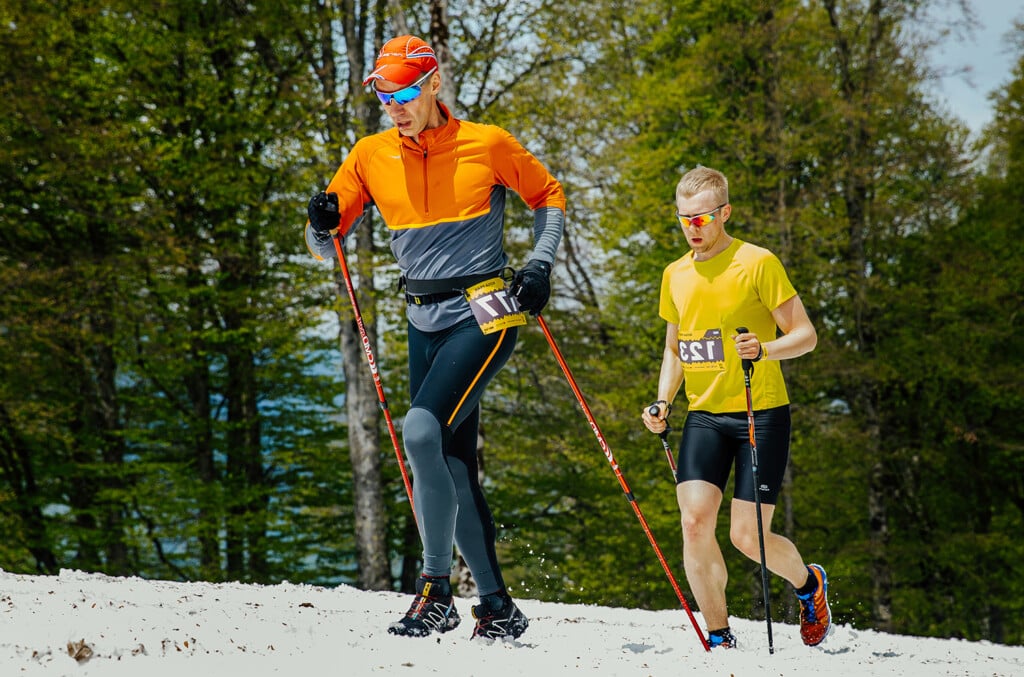
Yes, Salomon is one of the best trail running brands on the market. You have a wide variety of models to choose from, for all types of conditions and terrain. Salomon’s best-selling all conditions running shoes include the Sense Ride 5, the Speedcross and the Pulsar Trail range.
What is the difference between Salomon Speedcross and Supercross?
The Salomon Supercross is very similar to the Speedcross, with just a wider forefoot. It is also slightly cheaper than the hugely popular Speedcross. The Salomon Supercross has good grip on all surfaces, it’s resistant and comfortable, with a bit of energy return and the brand’s signature tight fit. Ultimately, it’s a question of how comfortable you find the two very similar models – so we encourage you to try them on!
Why are Salomon shoes good?
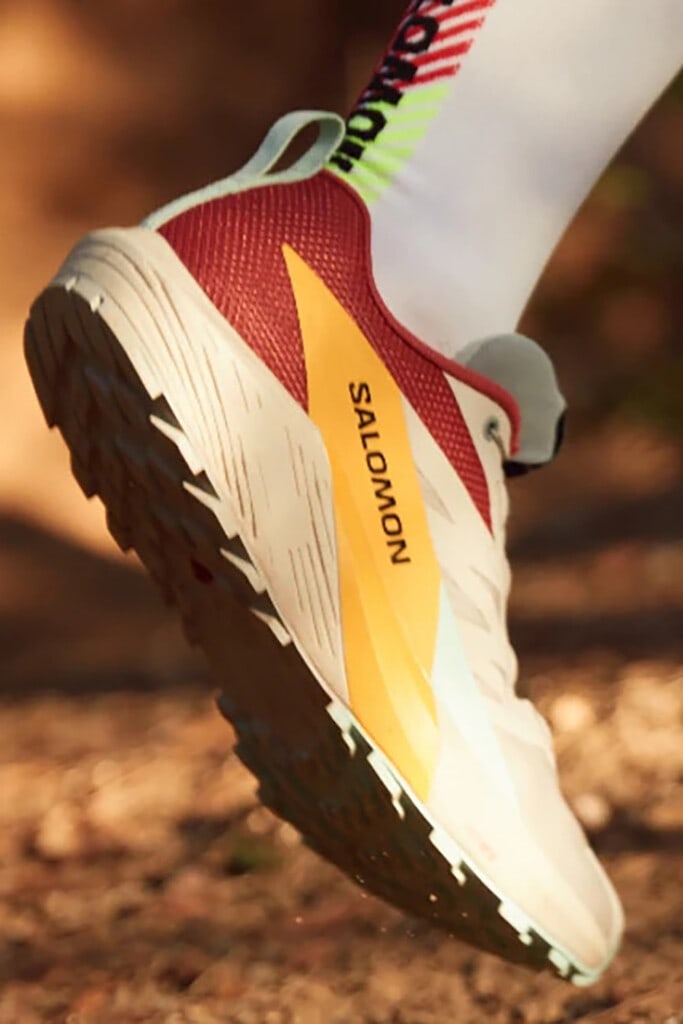
Salomon trail running shoes benefit from innovative technologies, a deep understanding of trail running and mountain conditions, and a very varied range. This makes Salomon a great brand to start out with, giving a beginner trail runner lots of high-quality options to test before finding the best shoes.
Are Salomons worth the money?
Salomon is not the cheapest brand of shoes on the market, but the high quality of materials and the innovative technologies you’ll find in their shoes are worth the money. Overall, Salomon shoes are durable (less so for the more racing-focused designs like that S/Lab Pulsar 2), they perform well on technical terrain, and are very comfortable and supportive. One thing that sets Salomon aside from other brands is the snug fit – so some wide-footed runners find their shoes uncomfortable, especially if they don’t like a slightly firmer ride. However, on the whole, price-quality ratio is fair for Salomon products.
Are you interested in other brands too? Check out our overall 2024 trail running shoe selection.
References
Salomon responsible innovation
https://www.salomon.com/en-us/sustainability#our-responsible-innovation
Tromsø Skyrace
https://www.tromsoskyrace.com/
Glen Coe Skyline
https://www.skylinescotland.com/skyrunning-races/glen-coe-skyline/
Kilian Jornet
https://www.instagram.com/kilianjornet/?hl=en
Emelie Forsberg
https://www.instagram.com/tinaemelie/?hl=en
François D’Haene
https://www.instagram.com/francois_dhaene/?hl=en
UTMB Mont Blanc
https://montblanc.utmb.world/fr
Diagonale des Fous
https://www.grandraid-reunion.com/english/
Courtney Dauwalter
https://www.instagram.com/courtneydauwalter/?hl=en
Hardrock Hundred Endurance Run
https://hardrock100.com/
Western States
https://www.wser.org/
Moab 240
https://www.destinationtrailrun.com/moab
Mathieu Blanchard
https://www.instagram.com/mathieu__blanchard/?hl=en
Marianne Hogan
https://www.instagram.com/mariannehogan_/?hl=en
Camille Bruyas
https://www.instagram.com/camille_bruyas/?hl=en
Rickey Gates
https://www.instagram.com/rickeygates/?hl=en
Maude Mathys
https://www.instagram.com/maude.mathys/
Davide Magnini
https://www.instagram.com/davidemagnini/?hl=en

